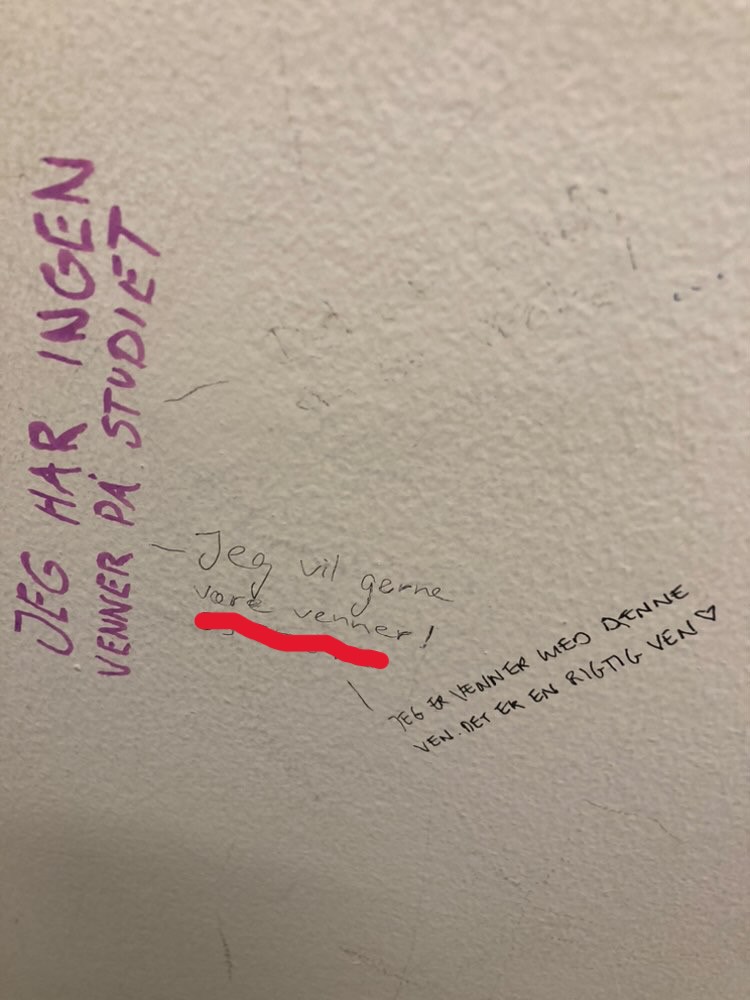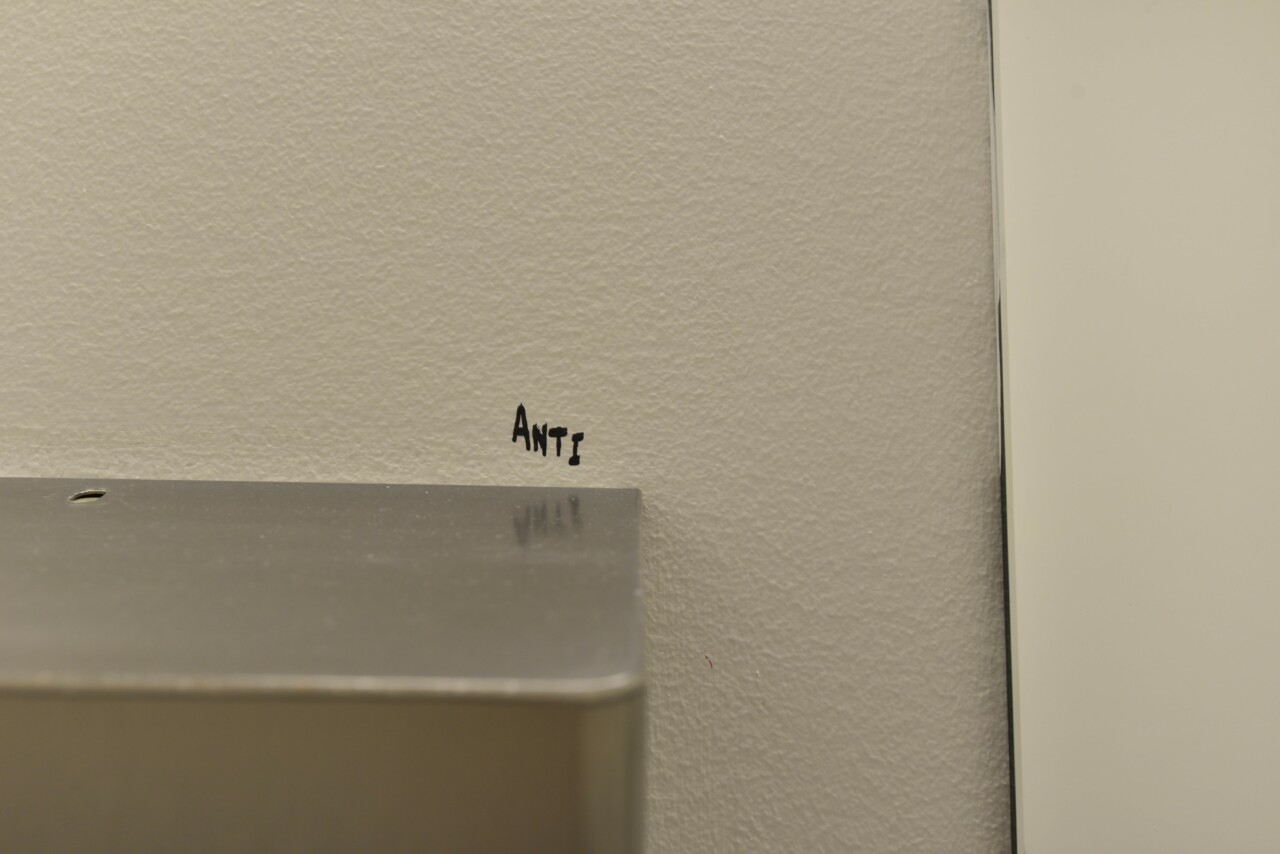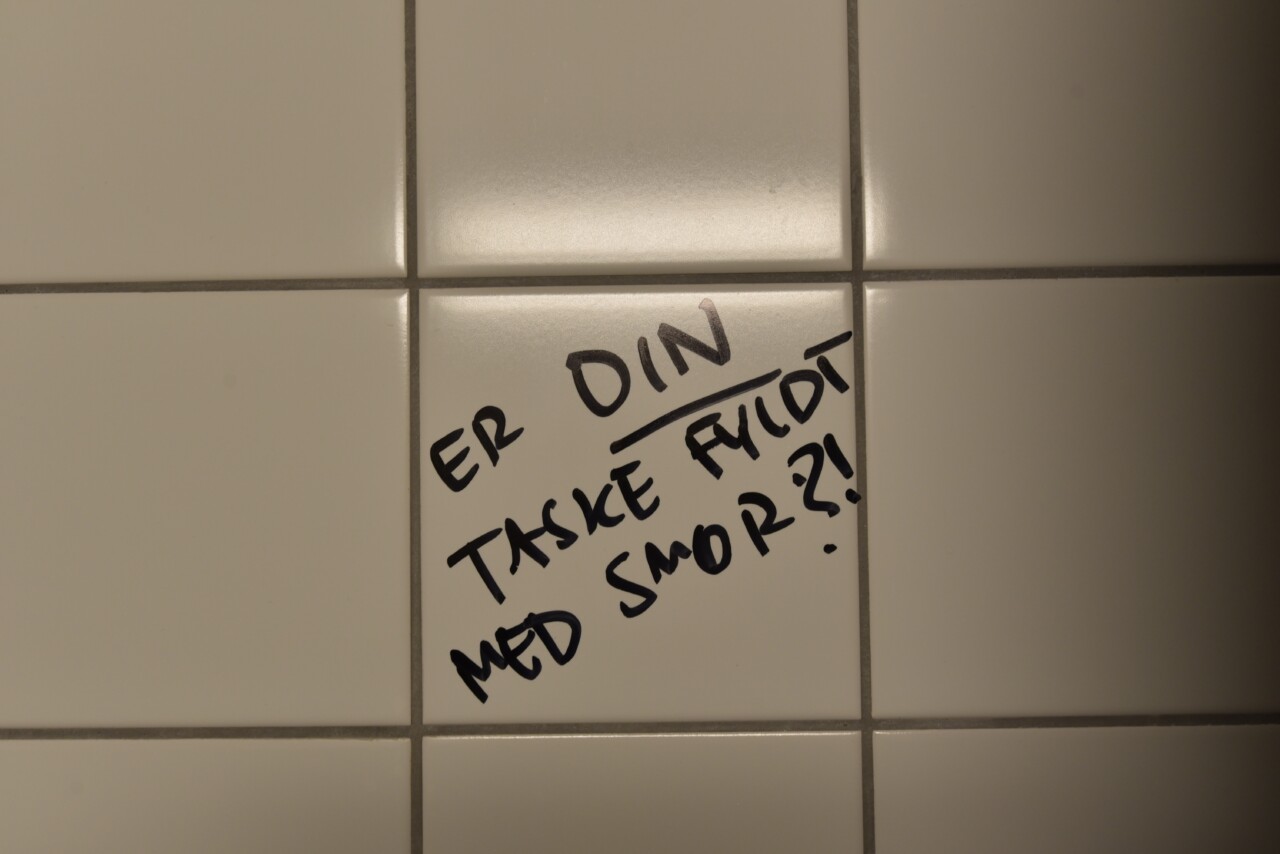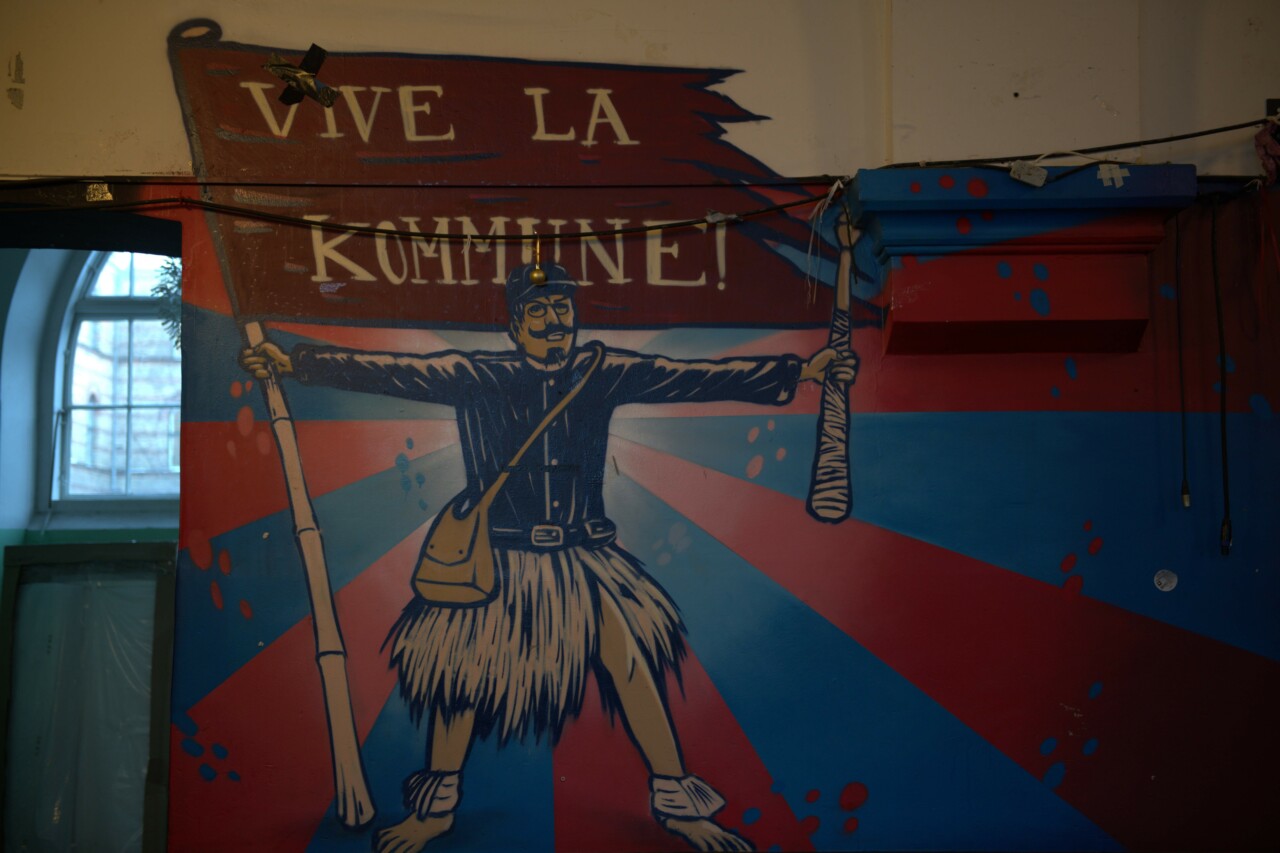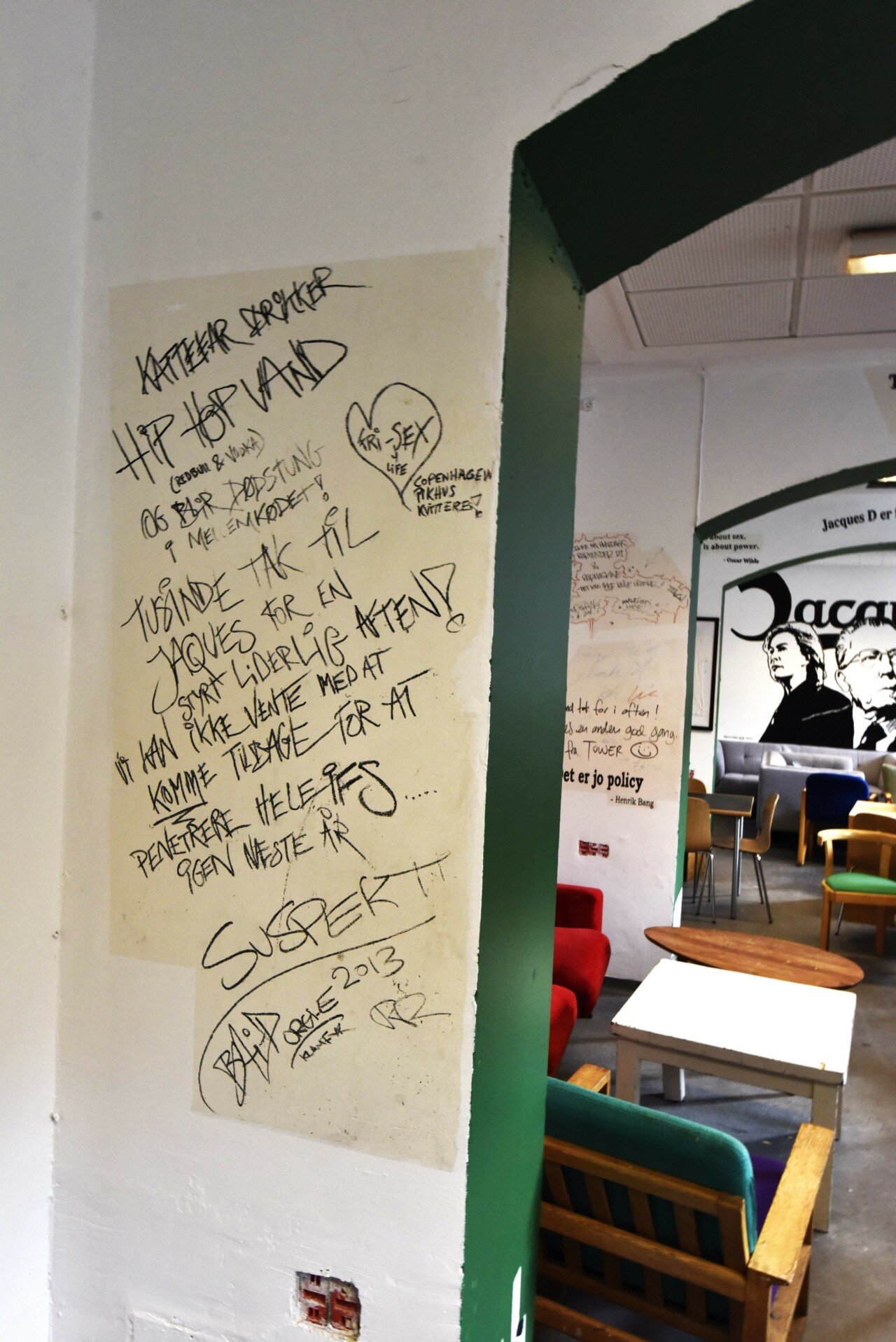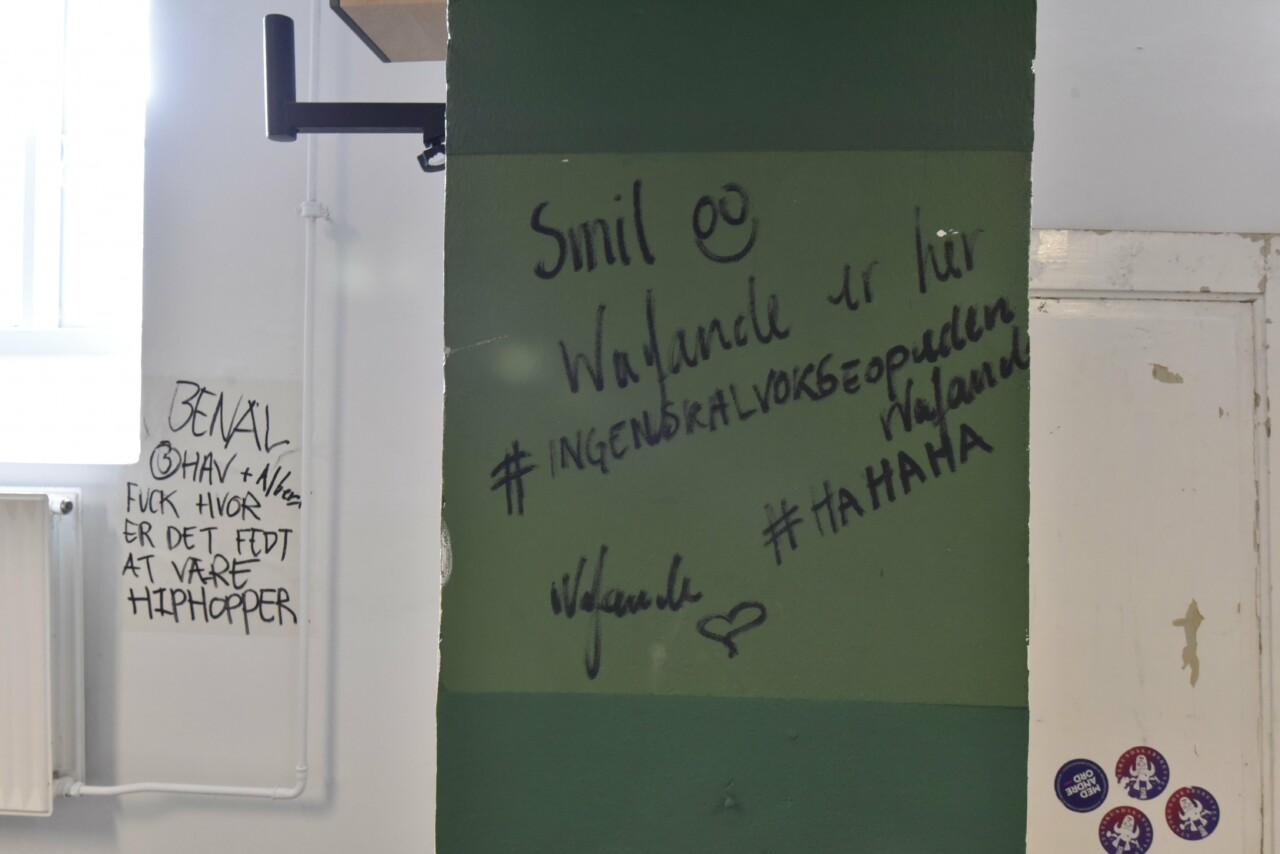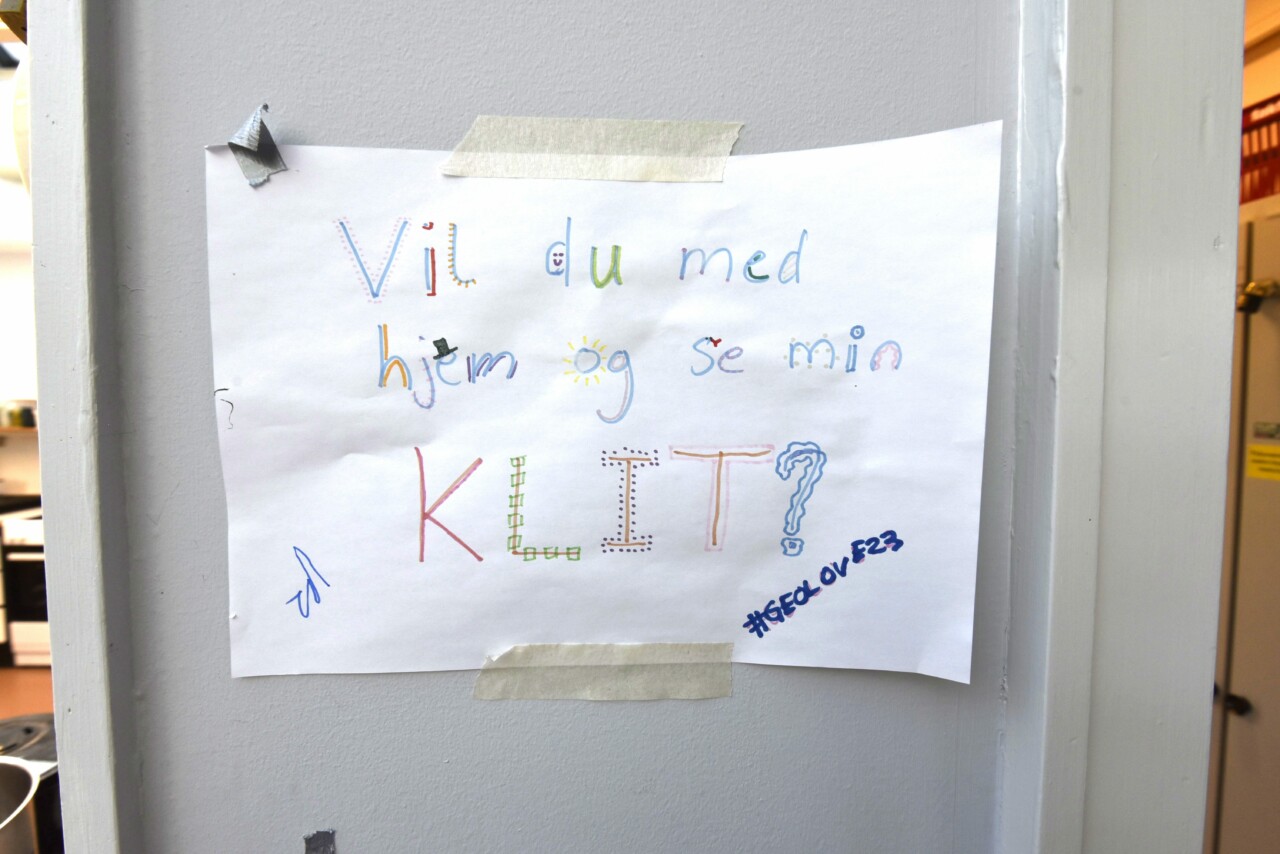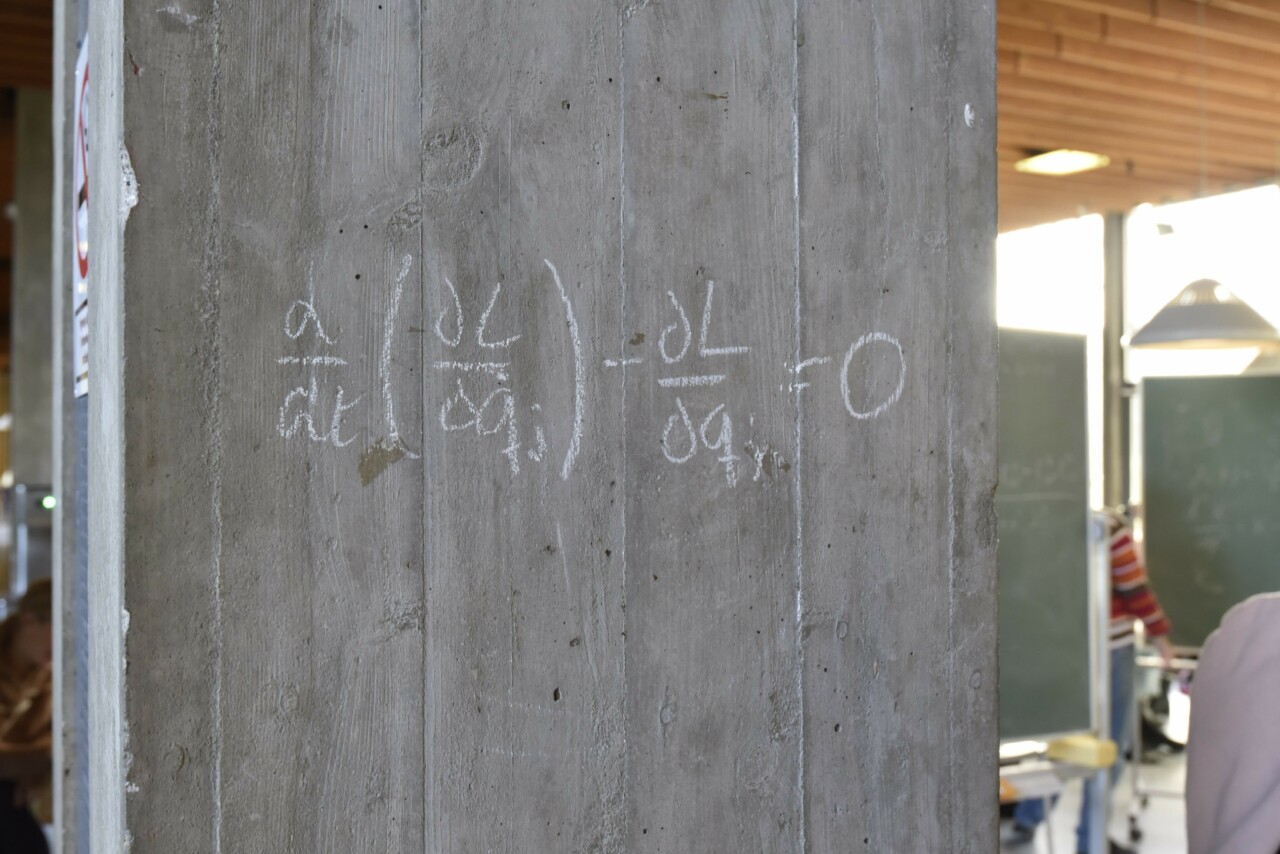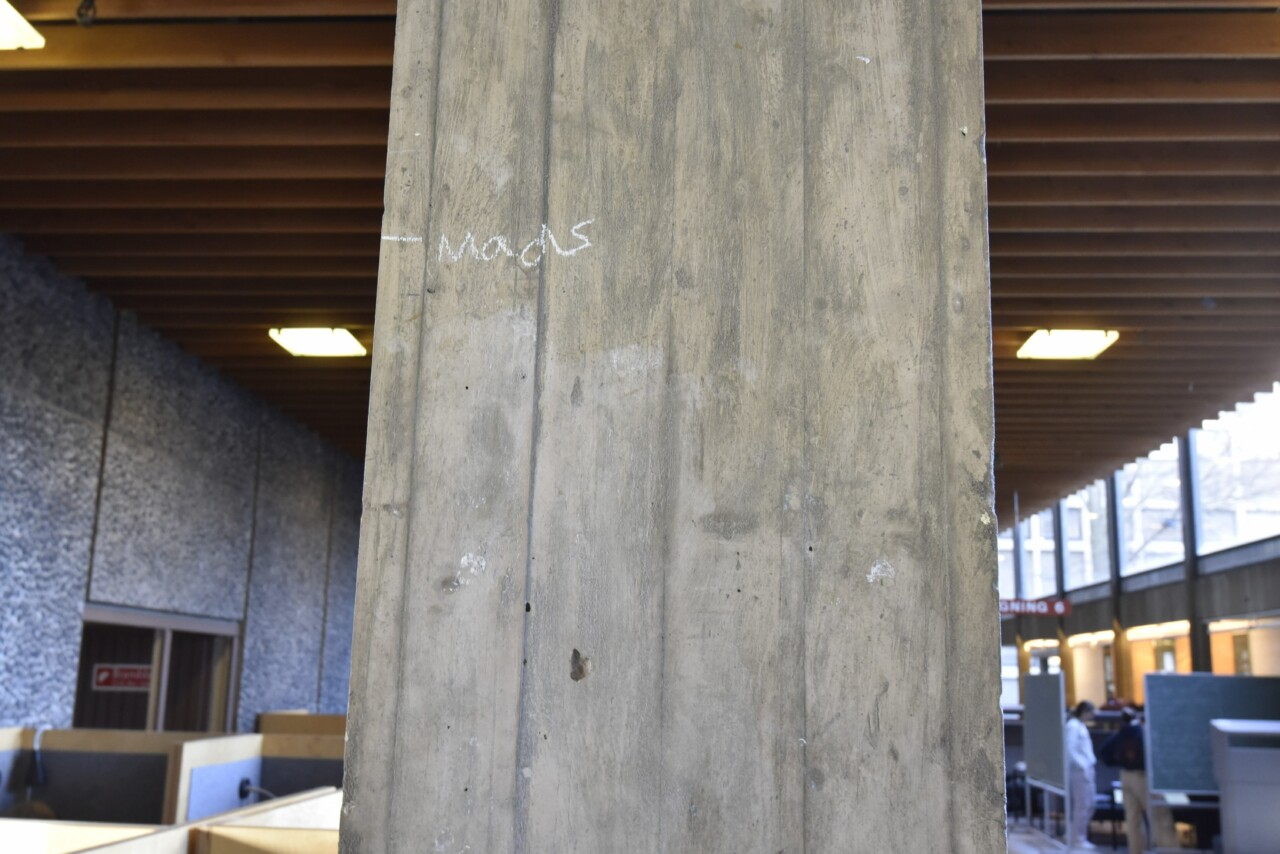Universitetsavisen
Nørregade 10
1165 København K
Tlf: 35 32 28 98 (mon-thurs)
E-mail: uni-avis@adm.ku.dk
—
Campus
Cultural heritage — The University Post went on a malodorous search for the rebellious messages that students traditionally exchanged in the campus privies. But the writing on the wall for 2024 is all ... gone? Some people miss the graffiti. But the janitors don't.
Guerilla art. This is what graffiti artist Banksy once called the phenomenon of drawing and writing in public places where you are not supposed to. And just as Banksy’s graffiti is often a comment on the surrounding society, so the University Post has previously written about the zeitgeist that unfolds on the toilet cubicle walls on South Campus, the home of the humanities students at the University of Copenhagen (UCPH).
There used to be loads of identity politics in the loos. This was both long exchanges on feminism and veganism, but also more student-oriented topics like the Danish study progress reform and study techniques were also debated directly on the wall. The last time we did this was almost five years ago. So we set out to revisit the toilets, student bars, and other blank – but forbidden – canvases for the expression of thought on the University of Copenhagen’s four campuses. We were in search of the writing on the wall among students in 2024.
Even though the polemics in South Campus restrooms were painted over in 2021, we began our hunt out there. The expectation was that the humanities’ felt-tip warriors would not have been so easily suppressed. But the toilet cubicle walls were clinically white. It was as if the zeitgeist itself had been flushed down the toilet.
We visited rows and rows of toilet cubicles on several floors in all buildings on South Campus, and we really didn’t find that much. But we did see one thing that moved us, as good graffiti does. A vulnerable scribe had scribbled: »I have no friends on the programme.« Someone else then added the invitation, »I want to be friends!« with a phone number. And then, in a third handwriting, the addition: »I am a friend of this friend. This is a real friend.«
We spotted the simple, but for the genre characteristically anarchist, tag ANTI over one door, a few political slogans in favour of Palestine, and an inside joke about butter. But the result was far from the anger and virtuoso statements of yesteryear.
It’s a shame that the graffiti is disappearing, says Freya, who studies Film and Media Studies:
»I really love the graffiti at UCPH. That was one of my first impressions of the university when I went to the open house meeting, and I remember thinking, okay, there are good vibes here! I especially love it when people have conversations via graffiti. When someone writes a reply to a previous statement. It’s so cute and almost communication across time and space,« she says.
In pure desperation, we called up an 80-year-old graffiti enthusiast who is more than ordinarily interested in the youth phenomenon. Her name is Mariane Hedegaard. She is a now-retired psychology professor and has studied graffiti for years.
She wonders whether social media have challenged graffiti as an art form.
»Young people paint graffiti for the sake of the community. The graffiti painters out in the community have a network. They know each other and they communicate with each other. And you might hope that they do the same at university,« she says. She believes that it is part of being a young person that you use a form of expression that pushes boundary lines.
»Maybe it’s controversial to say something like that as a former university employee. But it is the task of young people to change things and rebel against the establishment. The graffiti expresses a kind of longing, and so you can hope that someone will see the message and contact the sender before it is removed,« says Mariane Hedegaard.
This energized us, so we jumped on our bikes and crossed the Langebro bridge on our way to City Campus CSS.
But on the walls of this old municipal hospital, it was also hard to find the illicit penmanship. In the bar Kommunen, whose name refers both to the Paris Commune and to the Danish municipalities where most city campus students will find work after graduation, there was not much to be seen.
And the toilet cubicles were clinically clean in terms of messages, so you had to go into the student association’s rooms to find anything even closely resembling graffiti. The Jacques Delors bar is freshly painted. But they have carefully painted around what can best be described as wall greetings from musicians who have previously played at parties at political science. Here you will find Suspekt who in 2013 writes »thanks for a raunchy rave of an evening« and Benal who finds it »frigging cool to be a hip-hop«.
As our expedition continued we had even less luck. There are examples of students on the geography programme who want to reach a wider audience. But they are so well-behaved here that they write their messages on paper, that they subsequently tape to the wall. Here you find obscene jokes like »Would you like to come home with me and see my clit?« The messages are non-political, and the form of address does not cross any real boundaries.
On the long corridor of the ground floor of the H.C. Ørsted Institute (HCØ) it is packed with boards-on-wheels where students practice their mathematical proofs with chalk. This has resulted in some chalk graffiti on the grey concrete that keeps the HCØ Institute together. But it was only atomic formulas and equations, and no yelps of subversion. Nothing that could not be removed with a wet cloth.
The last two stops on our route were the Panum building and on Frederiksberg Campus. But despite our best efforts, we could not find a single offending letter.
Not everyone is a fan of graffiti messaging. For the University, the guerrilla art is costly:
»Graffiti is a reality throughout the entire University of Copenhagen. But it is not optimal that we have to constantly spend money washing down facades and purchasing painting services. We do not calculate the costs, but these are significant amounts,« says campus manager Søren Höffner on behalf of UCPH Campus Service.
»It cost us around DKK 300,000 when we had to paint the walls and doors in the toilets on South Campus 2. But we don’t usually have to spend these amounts normally.«
He does admit that there have been cases of graffiti being »very humorous«.
It is the unceasing toil of the buildings’ janitors that makes it so rare to see graffiti these days in the UCPH loos. The janitors we spoke to on our trip told us that they remove it as soon as they see it. So the question is whether anarchistic scribbling at the University of Copenhagen is coming to an end, or whether the future will revitalize the rebellious art form.
Graffiti has existed for as long as the University of Copenhagen has had students. In the old dungeon (yes, UCPH used to have one) messages and names have been scratched into the wall, and when we did a photoshoot for a portrait article in January 2024 in the attic above the Ceremonial Hall, we found both scratches and writing on the wall and on the load-bearing beams. The hard-working janitors have not erased the historical messages, which are, surprise, surprise … obscene.
